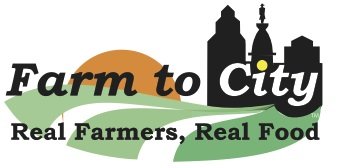What’s the Buzz?
Strawberries. Blueberries. Cherries. Sweet corn. Cucumbers. Tomatoes. Summer is the time of year where tables are packed with so many delicious produce options. It may be easy to overlook something like honey. Honey is honey, right?
But in order to talk about honey, we have to talk about honeybees, truly one of the most fascinating creatures on the planet.
According to the US Geological Survey, there are over 20,000 known bee species in the world. Four thousand of those different species are native to the United States but, interestingly, that does not include the subject of this post: the honeybee. Honeybees did not become part of our North America fauna until they were brought over by European colonists in the 17th century.
Since then, they have become an indispensable part of local agriculture and an essential worker for our seasonal menu.
Bees on the Farm
The reason we get excited about honeybees isn’t just the honey (we’ll get to that), but their tremendous ability to pollinate our crops. Local farmers, in order to have all those wonderful displays of fruits and vegetables, invite local beekeepers to their farms to help establish colonies around their fields and orchards.
Having hives around the farm ensures the proper pollination of their crops in the spring and summer.
Without the honeybees, other insects might not be able to pick up the slack, resulting in declines in production or even entire crop failures.
This is why there is always a sense of urgency whenever significant declines in honeybee populations are observed.
Colony Collapse Disorder
Just a few years ago, those declines in honeybee populations were all over the news. You don’t hear about it so much anymore but that doesn’t mean the problem has been solved.
Colony Collapse Disorder is still an urgent matter and continues to plague beekeepers worldwide. This crisis occurs when the majority of worker bees disappear, leaving only the queen and a few of her nursemaids.
This lack of worker bees is catastrophic for the hive.
A single bee can not live alone. The actual living being is the hive. If the hive gets sick, it can not come back from it. Eliminating or limiting use of chemicals on the farm - and on your lawn - is one of the ways we can stop the crisis of colony collapse.
Now for the Good Stuff: Honey!
We are lucky enough to enjoy the by-product of the hive: honey.
In a single year, one honeybee hive can gather as much as 40 pounds of pollen and 265 pounds of nectar.
For our local beekeepers, June is typically the first honey extraction of the year.
After a long winter, the bees take advantage of the spring nectar flow from blossoms and wildflowers. Think orchard blooms, native tree blooms, dandelions, and other early wildflowers, trees, and shrubs.
The queen starts to lay eggs and the workers feed the hive for the incoming brood.
During this process, they've created and stored a bounty of beautiful, light, capped honey.
What is capped honey?
Honeybees will fan the honey in the cells until it is about 17% water, so it doesn’t spoil. Once the honey is properly dehydrated, they cap it off with wax to seal it in the cells. This is generally when a beekeeper knows the honey is ready to harvest – when the bees have capped it off, it is READYYY!
Honey is Seasonal Too
The distinct colors and tastes of honey correlate directly to the pollen and nectar sources available to the bees during different seasons. Typically the lighter the honey, the earlier in the season it was harvested. Fall flowers, like mums, produce a darker colored honey.
In Conclusion…
If we are good to honeybees, they’ll be good to us in more ways than one:
Helping to pollinate gardens for a bountiful, delicious harvest
Making flavorful seasonal honey to enjoy
A special thanks to Rachel Newby and Kayla Shaner from New-Bee Ranch for sharing their time and expertise.






